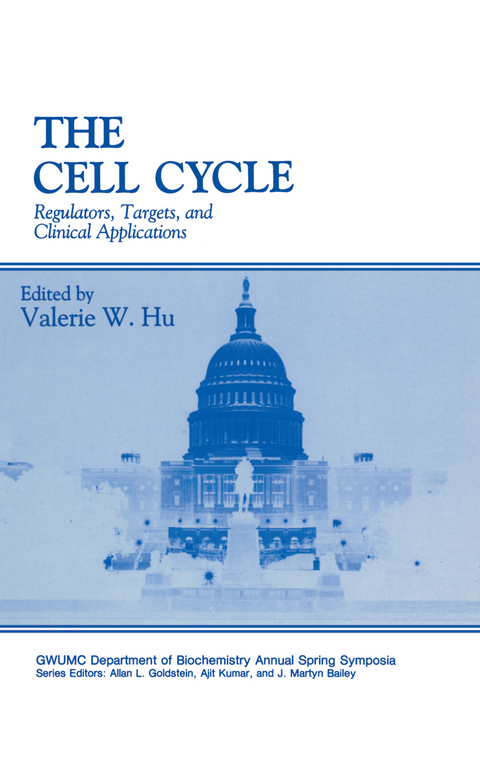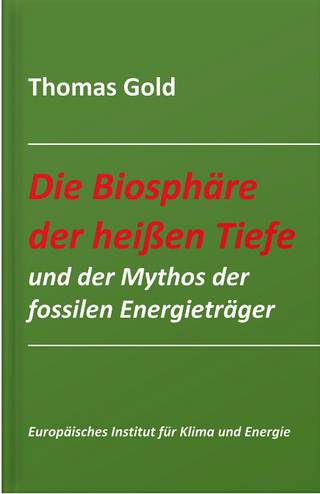
The Cell Cycle
Springer-Verlag New York Inc.
978-1-4613-6027-8 (ISBN)
Interest in the cell cycle has grown explosively in recent years as a result of the identification of key cell cycle regulators and their substrates. Aside from enhancing our understanding of normal cellular growth controls, this new knowledge has also becn valuable in elucidating mechanisms of growth deregulation which occur in diseased states, such as cancer and, in some instances, viral or parasitic infections. The Thirteenth Washington International Spring Symposium was organized with the intention of bringing together scientists working on different aspects of the cell cycle. Scientific topics presented ranged from molecular regulators and effectors to mitosis specific changes in cell architecture to the role of the cell cycle in development and disease. The goal of this gathering was to help formulate a more comprehensive and integrated picture of events driving and being driven by the cell cycle, as well as to evaluate the possibilities for clinical application of this knowledge. This symposium, held in Washington, D.C. from May 10-14, 1993, was attended by more than 400 scientists from 20 countries, including many of the scientific leaders in this field. This volume contains most of the papers presented at the seven plenary sessions in addition to selected contributions from a total of nine special oral and poster sessions.
I — Regulators of the Cell Cycle.- 1. Protein Phosphorylation and the Regulation of Key Events in Oocyte and Egg Cell Cycles (Keynote Address).- 2. Control of G1 Progression by Mammalian D-Type Cyclins.- 3. Phosphorylation in the Regulation of Protein Phosphatases.- 4. Positive and Negative Regulation of Cell Cycle Progression by Serine/ Threonine Protein Phosphatases.- 5. Effects of Phosphatase Inhibitors on Mammalian p34cdc2 Kinase Activities.- 6. The Meiotic Role of twine, a Drosophila Homologue of cdc25.- II — Control of Cell Proliferation.- 7. Extracellular Signal-Regulated Protein Kinases (ERKS) 1, 2, and 3.- 8. Cell Cycle Traverse and Growth Arrest Control in Senescent Human Fibroblasts.- 9. Cellular Senescence and the Cell Cycle.- 10. Cell Cycle Targets of Viral Oncoproteins.- 11. A GTPase Cycle Coupled to the Cell Cycle.- 12. Sphingolipids Metabolites: A New Class of Second Messengers in the Regulation of Cell Growth.- III — Cell Cycle Control of Gene Expression and Repair.- 13. Histone Gene Transcription During the Cell Cycle.- 14. G1-S Regulatory Promoter Elements and Their Interacting Transcription Factors.- 15. Regulation of Thymidylate Synthase Gene Expression in Growth-Stimulated Cells.- 16. The Role of the Transcription Factor E2F in the Growth Regulation of DHFR.- 17. Activation of the Heat Shock Transcription Factor During G1.- 18. DNA Damage and Cell Cycle Regulation in S. Cerevisiae.- 19. Preferential Repair of Cisplatin Adducts in the Human DHFR Gene During G1 Phase Assayed with T4 DNA Polymerase.- IV — Mitosis: Induction and Mechanics.- 20. Direct Inhibition of p107WEE1 by the NIM 1/CDR 1 Kinase.- 21. A Human Phosphotyrosine Phosphatase Associated with M phase-Promoting Factor.- 22. The Localisation of Human Cyclins and CDKs in the CellCycle.- 23. Regulation of Nuclear Envelope Assembly and Disassembly by ARF and Other GTP-Binding Proteins.- 24. Possible Role of the Multi-Catalytic Proteinase (Proteasome) in Regulating of the Cell Cycle.- 25. Cytostellin: A Nuclear Protein That Redistributes to Peripheral Cytoskeletal Locations During Mitosis and G1.- 26. Evidence for M-phase-Specific Modification of a Gap Junction Protein.- 27. Analysis of Centrosome Replication Events in Mammalian Cells.- 28. Requirements for Microtubule Polymerization and a Calcium Surge for the Metaphase-to-Interphase Transition in Mature Mouse Oocytes.- V — Cell Cycle Regulation in Development.- 29. Mos Proto-Oncogene and Cell Cycle Regulation.- 30. Altered Regulation of Cell Cycle Genes and Proteins in Senescent Human Diploid Fibroblasts.- 31. Cell Proliferation as a Biomarker of Age and Development.- 32. Heat Shock Genes and Cell Cycle Regulation During Early Mammalian Development.- 33. Expression of G1 Cyclins During Early Development of Zebrafish Embryos.- 34. Apoptosis: Definition, Roles and Regulation.- VI — Role of The Cell Cycle in Disease.- 35. Molecules of Deregulated Cell Cycle Control in Cancer.- 36. The Two Amino Terminal Transforming Functions of the SV40 Large T-Antigen Are Required to Overcome P53-Mediated Growth Arrest.- 37. Down-Regulation of Candidate Tumor Suppressor Genes in Breast Cancer.- 38. Expression and Regulation of Cyclin Genes in Breast Cancer Cells.- 39. Genotoxin-Induced Apoptosis: Implications for Carcinogenesis.- 40. Monitoring and Repair of DNA Damage During G2 in Relation to Carcinogenesis.- 41. Cell Cycle Regulation in Normal Versus Leukemic T Cells.- 42. Cells Undergoing HIV Envelope-Mediated Programmed Degeneration Accumulate in G2/M Phase.- VII — Clinical Applications.- 43. TheInvolvement of the Cell Cycle in Apoptosis.- 44. Cell Cycle Regulation and the Chemosensitivity of Cancer Cells.- 45. Multiple Cell Cycle Checkpoint Override and Its Potential for Binary Tumor Therapy.- 46. Radiation-Induced G2 Delay and Mitotic Cyclin Expression.- 47. Cyclin B Degradation as a Target of Antiproliferative Drug Action.- 48. Clinical Relevance of DNA Ploidy and Cell Cycle Phases in Transitional Cell Carcinoma of the Renal Pelvis and Ureter: A Study by Means of Static DNA-Cytophotometry.
| Reihe/Serie | Gwumc Department of Biochemistry and Molecular Biology Annual Spring Symposia |
|---|---|
| Zusatzinfo | XI, 430 p. |
| Verlagsort | New York, NY |
| Sprache | englisch |
| Maße | 156 x 244 mm |
| Themenwelt | Naturwissenschaften ► Biologie ► Biochemie |
| Naturwissenschaften ► Biologie ► Botanik | |
| Naturwissenschaften ► Biologie ► Zoologie | |
| ISBN-10 | 1-4613-6027-7 / 1461360277 |
| ISBN-13 | 978-1-4613-6027-8 / 9781461360278 |
| Zustand | Neuware |
| Informationen gemäß Produktsicherheitsverordnung (GPSR) | |
| Haben Sie eine Frage zum Produkt? |
aus dem Bereich


